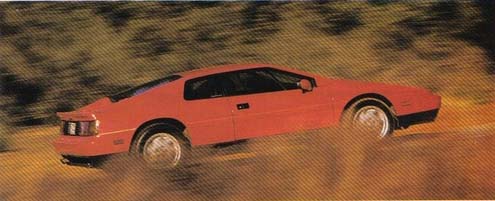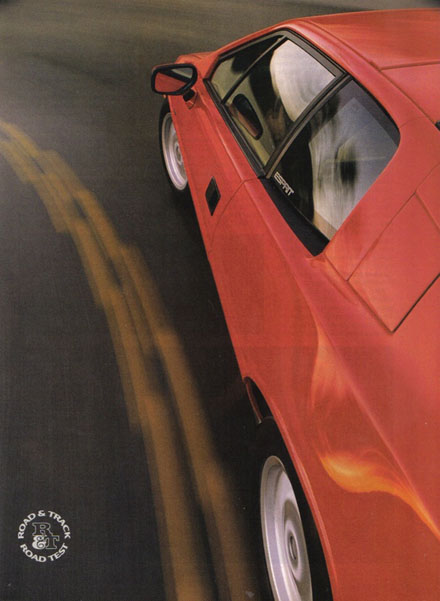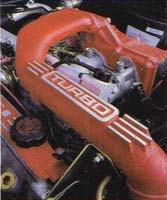
Road & Track Magazine - Road Test 1989
The Marine Corps is looking for a few good men. The same might be said for Lotus. Not that the Corps, or Hethel for that matter, would turn away a Lady.When the call goes out for recruits, sex isn't the issue. Getting the right people is, and the word "men" is used only in a generic sense, to define those special few males or females who have what it takes to serve. To drive a Lotus.
Okay, so putting a Lotus through its paces is not the automotive equivalent of joining the Marines. But it's different from driving a Porshe or even an exotic as a Ferrari. Tougher, more demanding, like the Corps. Because the Esprit Turbo is a serious automobile that reflests the heritage of the company that's better known for it's racing cars than for its road cars. True, the latest Esprit is reasonably civilized. But it's not sissified like some of your generic GTs. It's a "mans" car, one that must be driven and not merely steered.
It's the nature of the beast; in this case, a road car that is very much like a racing car. The Lotus looks fast just sitting still and goes as fast as it looks. It handles extremely well, performs dazzlingly and makes sounds that are muisc to an enthusiast's ear. But it also challenges one's abilities, probes one's physical prowess and metes out reward or punishment accordingly, just like a racing car.
You probably already know all that because this is not the first time the car has appeared on R & T's pages. The original Esprit that beganlife as a Giorgio Giugiaro design project for the Turin auto show dates back to 1972 (the production version came out in 1975). The Turbo hearkens back to 1983 (in the USA) as does the first exterior restyle, while the second redesign was done in 1988. Although it did represent a degree of stylistic and mechanical refinement, this redo did not disturb the unique character of the car. This means that despite myriad changes, the 1988 Lotus still did everything a Louts was supposed to do - handle well and go fast . . .like "a scalded cat," to quote our July 1988 road test report.
Unfortunately our scalded cat had a cantankerous disposition as we pointed out in our test. Seems there was a bit to much Formula 1 engine to its turbocharged inline 4 cylinder, and while power was adequate, we found that"you just won't win many stoplight drag races without a flurry of revs and a willingness to abuse the clutch." As for driveability, we wondered "why the cheapest fuel-injected cars now available start and idle perfectly, while the costly Lotus has fuel-metering problems." Disparaging words and not what Hethel wanted to hear. So the factory made some more changes to the engine mostly, but in other areas as well. The result is the 1989 Esprit Turbo, a much improved automobile that is still a Lotus.
About the engine: Although such fundamentals as bore, stroke, compression ratio and the like are the same, the fuel - injected system, ignition, turbocharger and exhaust system are new or revised. Consequently, horsepower is up from 215bhp at 6250 rpm to 228 bhp at 6500 rpm and so is the torque, from 192 lb/ft at 5000rpm to 218 at 4000. Details abound. Suffice to say that the induction system now has tuned runners with individual throttles for each cylinder, there's a new fuel management system, who's Electronci Control Module now senses 14 parameters, the electronic twin-coil ignition fires the spark plugs directly, the turbocharger has a two stage boost control and a boost modulation feature (for faster throttle response), there's a knock sensor and, finally, the exhaust system has a new catalyst and muffler (for reduced back pressure). One morething: There's a larger (235 mm) clutch to accommodate the increase in horsepower and torque.
Also, there's a new 5 speed with taller final drive and revised gearbox ratios (1st is noticeably lower, 3rd, 4th and 5th are much closer together) tailored to the increases in horse power and torque. Because of the redesigned transaxle, the Esprit Turbo's rear inboard brakes have been moved outboard. By now you've undoubtedly surmised that all of this should effect performance and it does: The 1989 Esprit Turbo is both quicker and faster,just how much we'll see in a moment.
After a major restyle in 1988, Lotus was not about to change the outward appearance of the Esprit. So the ew exterior revisions the factory did make are really minor: a new front badge, power actuated door locks and remote fuel filler release, and larger, electrically heated side view mirrors. Now about the new improved numbers . . . With 13 more ponies, the 1989 Esprit Turbo is significantly quicker. A spirited blast from 0 - 60 mph now takes only 5.2 (versus 5.8) second, while a full-on attack on the quarter mile needs only 13.6 (vs.14.3) secs. That's quick to everyone except the folks at Lotus Cars USA who sent their private lead foot to our test station because they insisted the car could do 4.8 sec 0-60. Never mind that their own press kit says 5.2, just like our results. Anyway, after dozens of runs characterized by speeds shifts (which we avoid) and much strum und Drang, the factory hot shoe did break the 5 seconds, but only by 0.01seconds. By then, the reverse lockout ring was no longer usable and everything was undoubtly well polished inside.
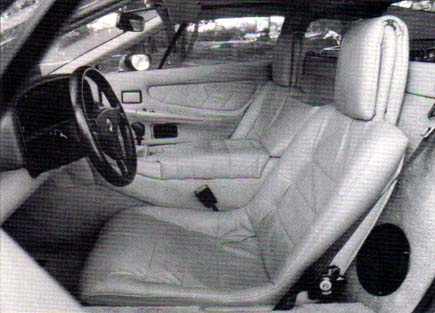
On the skid pad, the latest esprit Turbo performed better than before, pulling 0.86g, an improvement over the 1988 model's 0.82g. But in the slalom, the new car mysteriously went only 61.7 mph while the old one went 63.4. With the change to outboard brakes, there's more unsprung weight at the rear. However, we'd be suprised if this slight change would effect the slalom so much.
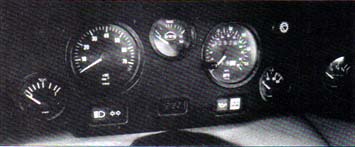
On the highway, the latest Lotus fellt truly transformed. The engine revisions make the car feel perceptibly quicker and smoother. It loves to rev, just like it's predecessor, yet it doesn't mind if you lug it, right down to 1500rpm. And, when it hasn't been manhandled, the new gearbox is quite positive with a reassuring feel that leaves no doubt about which gear you're in or headed for. Given the right environment, this engine / drivetrain combination makes the new Esprit feel even more like a racing car.
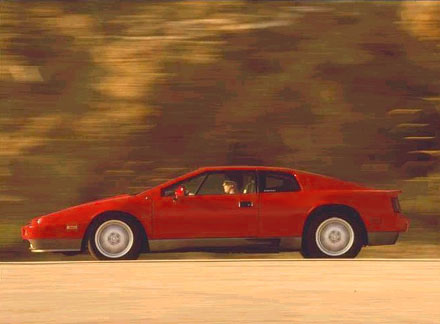
In that same proper environment , one quickly discovers Lotus handling is handling is race car like too. Crisp, precise, demanding. Sitting in the luxuriously upholstered leather driving seat, hands planted firmly on that hefty leather-covered steering wheel, the driver's senses soar. With no effort at all the most serpentine path is straightened by a car whose limits are so high that it takes a very special driver to probe them. It also takes a very special (make that muscular) pilot to manhandle the Louts steering at slow speeds - in the city driving or on a sinuous road with low speed corners. And a very observant one to keep the world in sight from within a cockpit that offers only marginal outward vision, especially to the rear.
But then you already know that, don't you? THat driving a Lotus Esprit Turbo is like driving a racing car on the road. It's a challenge, a test of one's mettle. But it's also a most rewarding experience best understood by a few good men.
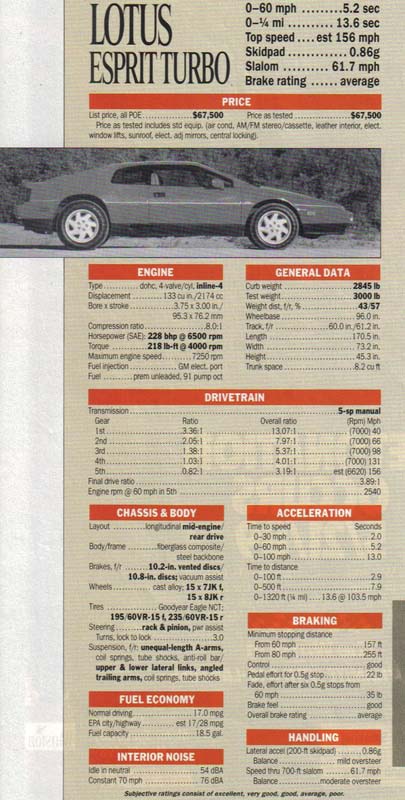
By Semper Fly

